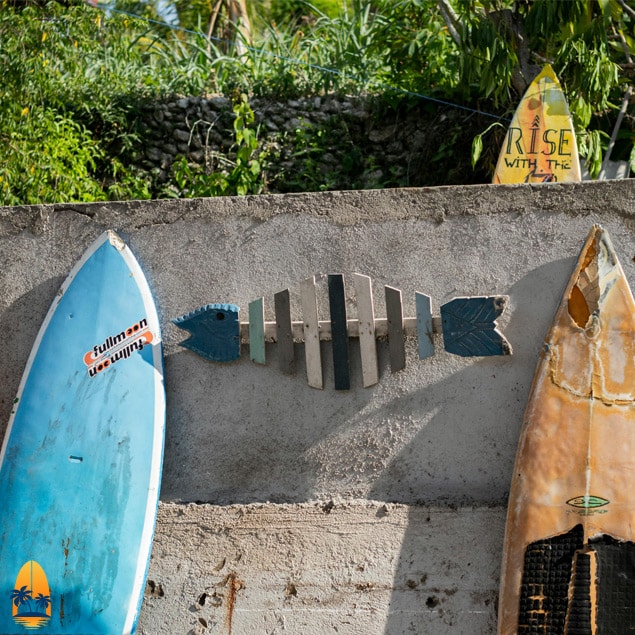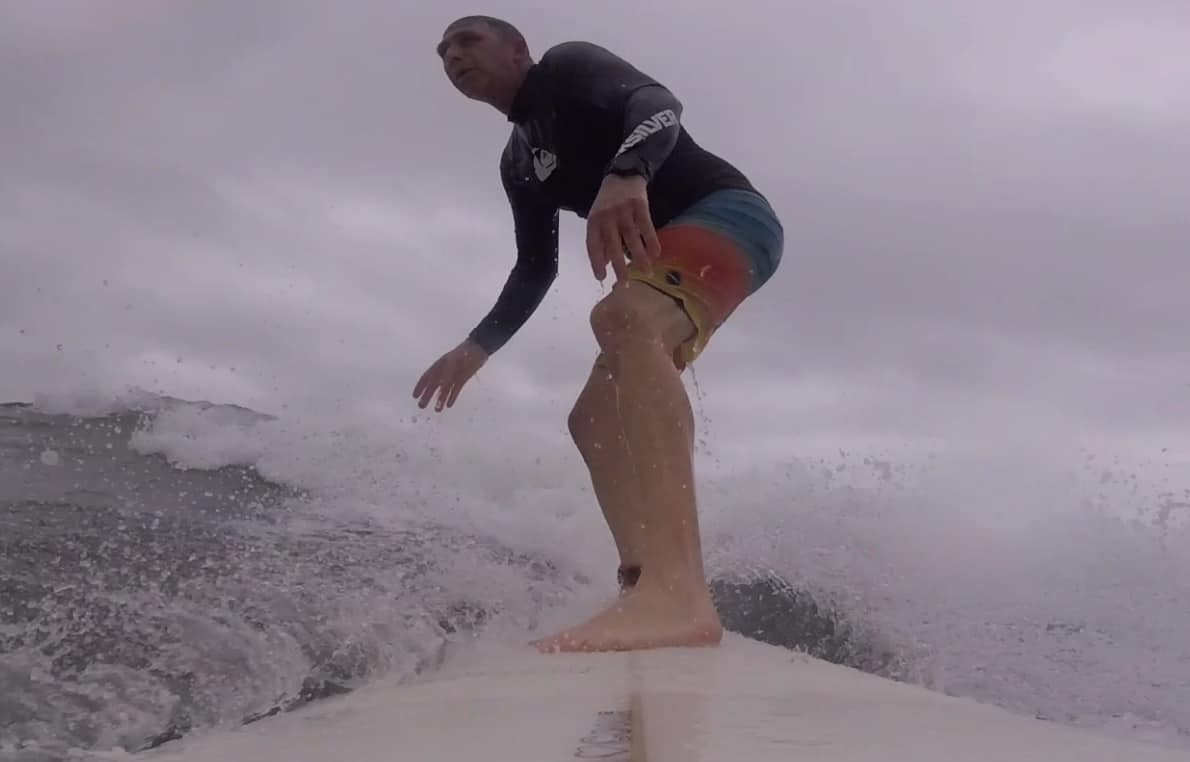Whether you’re checking out your own board or shopping for a second-hand surfboard, knowing how to spot the signs of damage or wear is crazy important. Let’s break down how to know if a surfboard is bad. We’ll be going over both soft tops and hard top surfboards so you know if you’re dealing with a board that’s past its prime.
Inspecting a Board You Own
Soft Top Surfboards
Soft top boards are generally more forgiving, but they can still have issues over time. Here’s what to look out for:
Dings and Delamination: Even though soft tops have a foam outer layer, they can still get dings. This is true, especially on the rails (sides) and the bottom. Also, check for signs of delamination. This is when the outer layer separates from the core and the covering on the bottom of the board.
Fin Box/ Fin Hole Damage: Check the fin boxes (where the fins attach) or the holes where the fins screw in. Loose or cracked fin boxes can cause real problems. If the fins aren’t secure, you may lose them in the surf. Give them a quick wiggle to check if they’re solid.
Waterlogged Foam: If your board feels heavier than usual or you notice a “squishy” feel, it could be waterlogged. Water seeps into damaged areas, making your board heavier and harder to paddle. It can also make it awkward to ride.
Hard Top Surfboards
Hard tops, like fiberglass or epoxy boards, tend to show damage more clearly. Here’s how to spot problems:
Dings and Cracks: Small cracks and dings are common. It’s important to know that this can lead to water getting into the foam core if left untreated. Check the rails, bottom, and tail closely. If you notice soft spots or water seeping from cracks, that’s a sign of deeper damage.
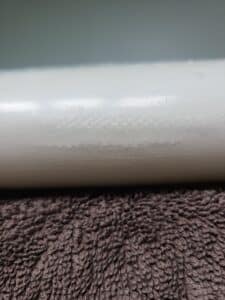
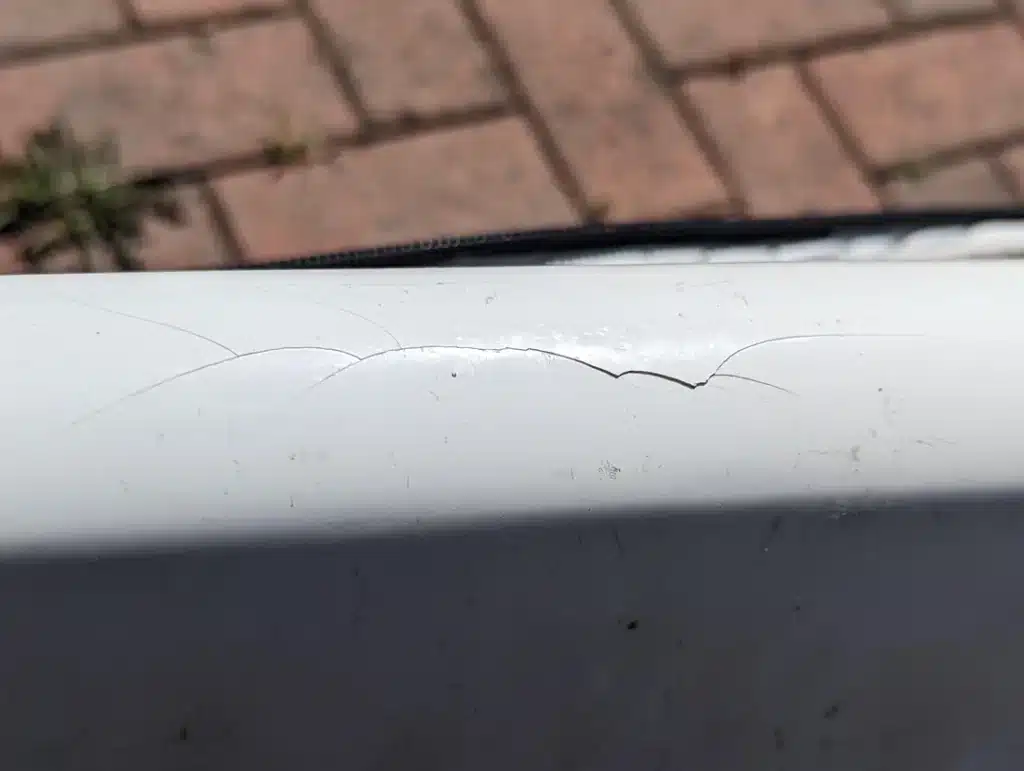
Delamination: This is more common on older boards, especially if they’ve been left in the sun for a long time. Delaminated areas will look like bubbles or feel spongy. This weakens the structure and performance of your board. If a surfboard is delaminating it’ll mess with stability and makes the board flex weird
Yellowing and UV Damage: Over time, hard tops can yellow from UV exposure. While this doesn’t necessarily mean the board is bad, it can indicate that the resin has been weakened, making it more susceptible to dings or cracking.
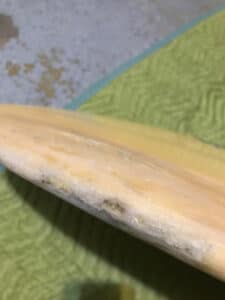
Fin Box or Boxes: Check around the fin boxes to make sure the glazing isn’t cracked. Also, check for damage on and in the fin box as much as you can. Wiggle the fins to see if they’re loose and look for hairline cracks around the edges of the fin boxes.
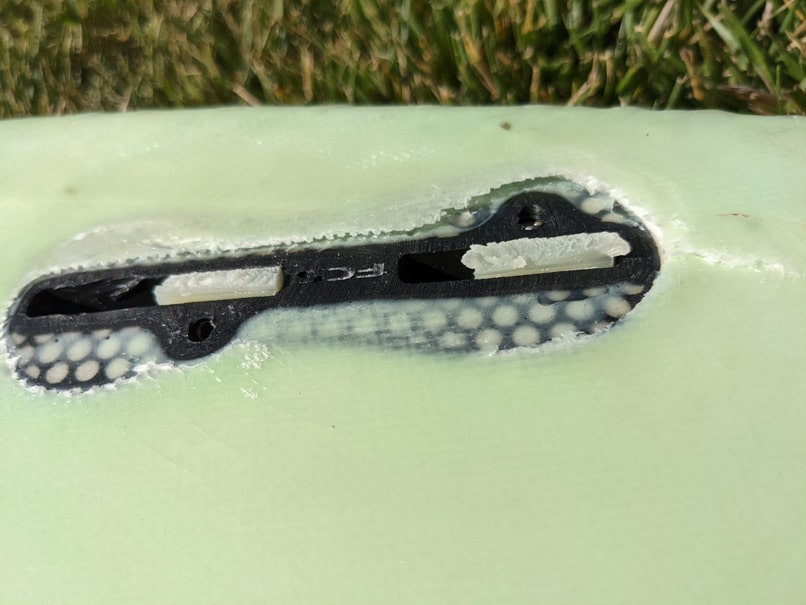
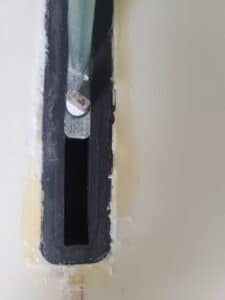
Spotting A Bad Surfboard When Shopping Second-hand.
Buying a second-hand surfboard can be a great way to save money, but you don’t want to end up with a dud. Here’s what to check for, depending on the type of board.
Soft Top Surfboards
Look for Deep Dents or Creases: Soft tops can hide damage under the foam. If there are deep creases or dents, the board might have been buckled or damaged in a way that will affect performance.
Check the Traction Pad: If the board comes with a traction pad, see if it’s peeling off. A peeling traction pad can indicate the board has been left in the sun or gotten wet in places it shouldn’t have, leading to potential damage underneath.
Inspect the Rails: Like with your own board, check the rails for any tears or gaps in the foam. This can indicate rough treatment or wear that could compromise the board’s structure.
Hard Top Surfboards
Ding History: It’s normal for second-hand hard tops to have dings, but ask the seller how they were repaired. Well-repaired dings (usually using resin and fiberglass) are fine, but poorly done repairs can cause the board to take on water or break more easily.
Pressure Dings: These are small dents, especially common on the deck where your feet go. Some pressure dings are normal, but lots of them can mean the board is worn out or made from lower-quality materials.
Twist Test: Place the nose of the board on the ground and twist the board from the tail. If it twists too much or feels flimsy, that could mean the internal structure is compromised.
Check for Sun Damage: If the board looks faded or has a yellowish tint, it’s been exposed to a lot of sun. Sun exposure weakens the resin and foam, reducing the board’s durability.
Test the Flex: Both soft tops and hard tops should have a bit of flex when you push down on them. Boards that are too stiff might feel slow in the water, while boards that are too flexible could snap more easily.
Always Ask About the Board’s History:
If you’re buying from a private seller, ask how often the board was used, where it was stored, and if they’ve ever had to repair it. This can give you an idea of how well the board was maintained.
For those of you who aren’t sure what size board you need as a beginner, check out our guide on getting the right board length.
How to spot a bad surfboard FAQs
How do I tell if a surfboard’s too waterlogged to fix?
If it feels heavy, and sluggish, or you see water squirting out when you press on it, it’s probably toast. A little dampness might dry out, but a soaked core—especially in foam boards—usually means it’s done.
Can a heavily yellowed hard top surfboard still work okay?
It can, but yellowing means the resin is breaking down from sun exposure. It’ll be weaker and more prone to cracking, so it’s a gamble—fine for casual rides, risky if you’re pushing it.
What’s the biggest red flag when buying a used surfboard?
Delamination is a killer. Bubbles or soft spots mean the layers are splitting, and that board’s not long for this world. Walk away.
How much do dings really matter?
Small ones are cosmetic and fixable, but deep dings or ones near the rails can weaken the board or let water in. For a newbie, skip anything that looks like a project.
Final Thoughts
Whether you’re inspecting a board you already own or shopping for a used one, knowing what to look for can save you time, money, and frustration. A little extra care when choosing a board can make all the difference in your surfing experience. Always take your time inspecting boards, and don’t hesitate to walk away from a board that seems too damaged. If you’ve got questions or comments drop them down below or shoot us a message on the contact page. Happy surfing!

